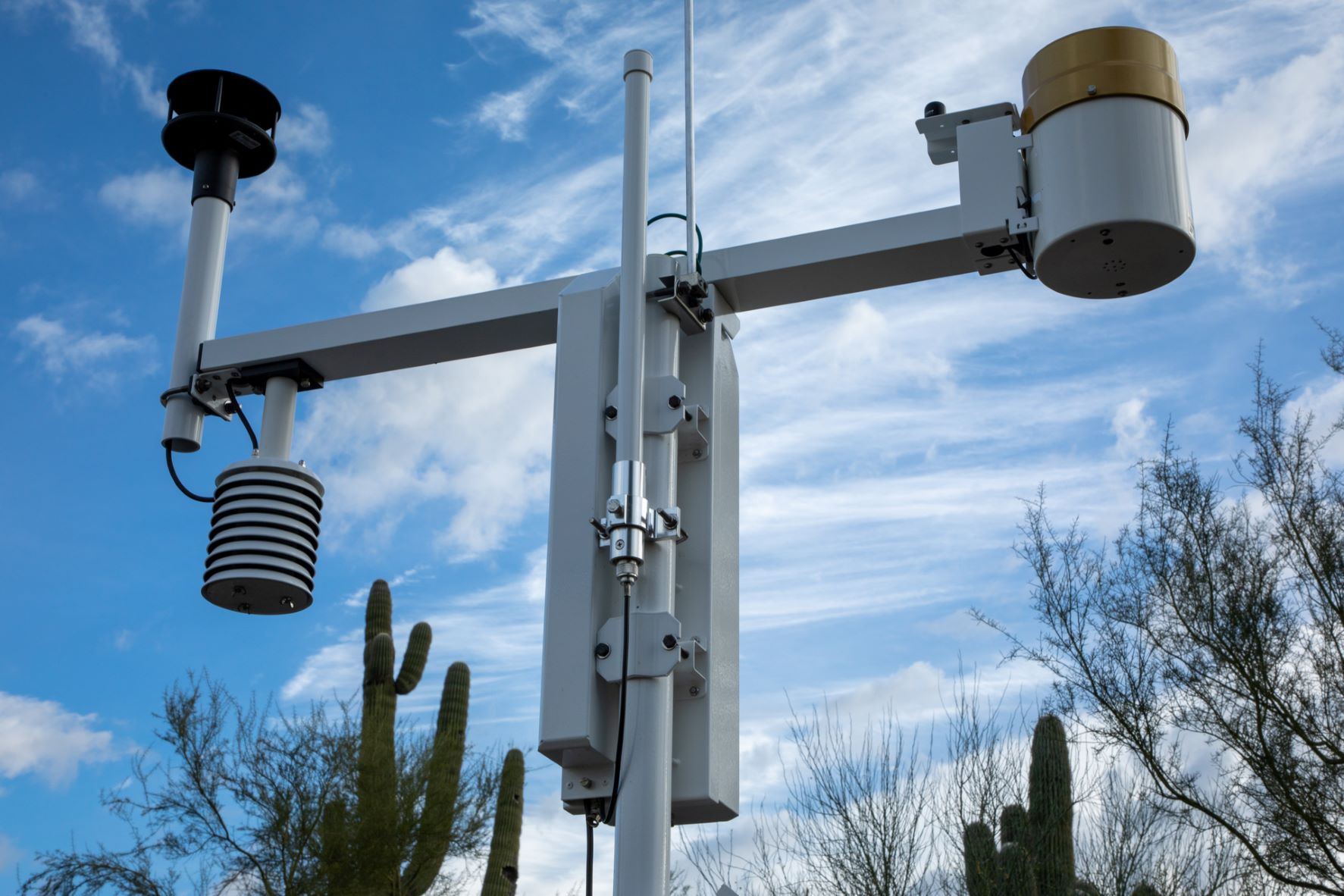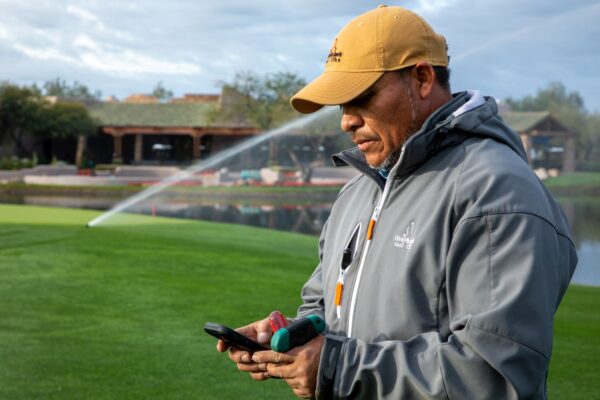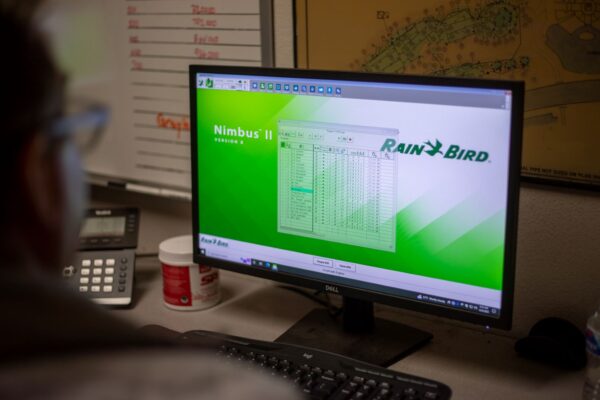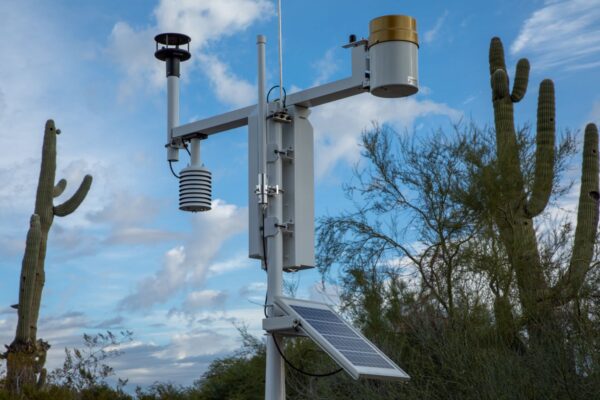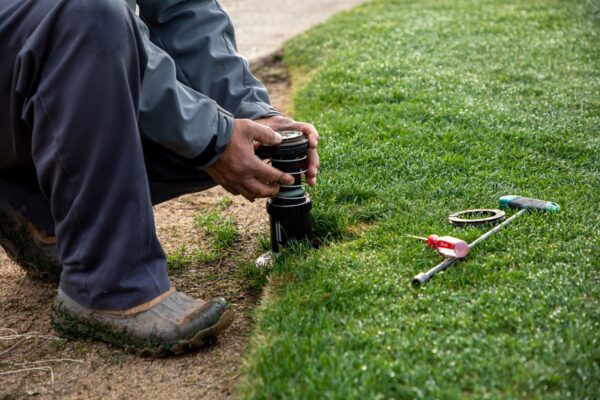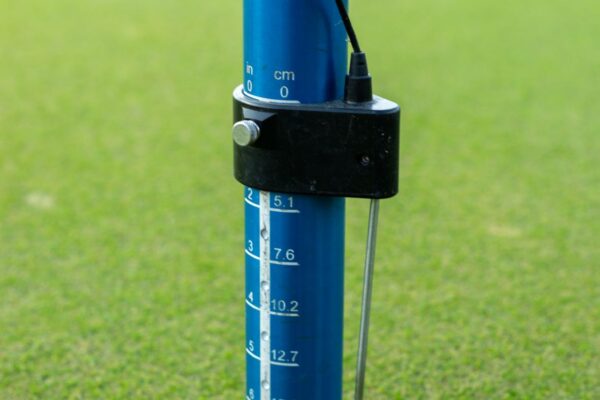Golf and the environment have cohabited hand-in-hand for hundreds of years, one influencing the other in an ongoing balance that continues today. In the desert Southwest, that means using water wisely, and as talk of water shortages begins to grip the Grand Canyon State, it only makes sense to turn to those who already conserve this precious resource.
“Water is, by far, the largest input of material for any golf course,” said Grayhawk Golf Club’s Director of Agronomy, Ernie Pock. “We’ve been working on efficiencies all along, especially since 1984 when the 90-acre turf limit was first adopted. Since then, we’ve had even with more demand, more golfers, we’ve found ways to use less water.”
Two things drive golf course agronomists to use just enough water: expense and playing conditions. Too much water and the club’s financial health suffers along with the golf experience. How do they know how much water is needed?
“We have an onsite weather station that gathers daily data to determine a number of things but one of the most important is the evapotranspiration [ET] rate,” said Pock. “This is the amount of water leaving the plant [turfgrass], soil and other surfaces.”
Pock explains that the ET number tells them how much water to put back: “no more, no less. The system even accounts for recent rainfall,” he added.
When it rains, the irrigation system fills a virtual “rain bucket.” For example, if the ET is 0.3 inches, and it rains a tenth of an inch (0.1), it will recommend adding 0.2 inches to restore the 0.3 ET number.
“The system classifies rain as ‘weather rain’ or ‘accepted rain,’” said Pock.
When rain falls slower than 0.28 inches/hour, every drop is accepted into the soil, instead of running off as moister from weather rain. Accepted rain builds up in the system’s rain bucket, which is first emptied, “before irrigation is allowed to resume,” Pock said.
Not only do they measure moisture falling from the sky, but they also get a fix on moister in the soil, too.
“We pull soil samples in the old-school way, and we use the handheld senser to get precise, objective readings,” said Pock. “You still have to get out there and keep an eye on things. It just helps us to reinforce what we see and quantify the situation in the soil in many ways.”
The GPS-enabled sensor captures real-time moisture, salinity, salinity index, surface and soil temperature data, along with potential causes of stress. This accurate picture of the irrigation, nutritional and uniformity of turf and soil conditions gives Pock actionable conclusions to maximize turfgrass health with minimal resources and labor.
It’s all part and parcel of the modern, precision irrigation systems used as powerful tools for water conservation, and Grayhawk has one of the most sophisticated and effective on the market.
Another cornerstone conservation practice requires more hustle than science.
“We have two maintenance team specialists per golf course that focus exclusively on irrigation,” Pock said. “They monitor, adjust, repair and replace the roughly 1,200 sprinkler heads and PVC lines that feed them on each golf course.”
They do nothing else on a daily basis besides catch and fix leaks, immediately, check sprinkler run times – anything and everything to keep the irrigation infrastructure tight.
Making “Water Wetter”
The makeup of the water itself leads to conservation opportunities, and with a little applied science agronomists make “water wetter.” Monthly, depending on time of year, surfactants are applied to help water move through the soil, retaining moisture in the soil and reducing runoff of water and soil-applied chemicals.
A penetrant-type surfactant applied in the winter months pushes water deeper into the soil, forcing the roots to stretch longer to reach it. This minimizes water used while producing healthy plants. In the summer months, a “holder” is added, reducing the amount of water lost to the environment through evaporation.
Low-Sodium Diet
In some cases, the water’s chemistry works against conservation: “What your water is, your soil becomes,” said Pock. The recaptured water used by North Scottsdale golf courses is packed with sodium. Salty soil is left behind after the water is removed. Excessive sodium “holds” water molecules near the surface, not allowing them to move down through the soil to encourage root growth.
“Golf courses can look wet, while the grass still struggles,” said Pock. “Sodium levels are a big factor in the quality of effluent water, especially when using less ground and potable water.”
Reverse osmosis treatment in North Scottsdale removes some of the sodium, which comes from the environment as well as in-home soft water units. Treating hard water with potassium salt instead of sodium would solve the problem; however, potassium is several times more expensive.
Another culprit: Bicarbonate. Referred to as the “little robber,” bicarbonate attaches to calcium or magnesium, leaving behind the insoluble and familiar “bathtub ring.” When bicarbonate is broken down with a weak acid, like vinegar, calcium and magnesium become available for plants to use instead of building up as a salt.
Poor Water Begets More Water
“When water chemistry is poor, it takes more of it to grow plants,” Pock concluded. “It varies. Water sources – well water, ground water, effluent – throughout the Valley have different chemical profiles. Even wells drilled close together can have very different water chemistry. You have to consider this when coming up with water allocation guidelines. Clubs across the state face different water challenges. It’s not as simple as gallon-per-gallon volume.”
It’s a Wildlife
The extra sodium doesn’t seem to bother wildlife. With a steady supply of water, food and shelter, Grayhawk is loaded with critters. Arizona Game and Fish, for one, is well aware of the positive effect of golf on wildlife. They regularly survey waterfowl populations at the club, and in 2018, they teamed up with University of Arizona to relocate gamble quail from Grayhawk and other nearby golf club to Southern Arizona. During that time, approximately 250 birds took a free ride to the Old Pueblo.
Microbiome, Big Helpers
Research is uncovering big ways the microbiome can help conservation by propagating beneficial strains of microalgae found in Arizona’s native soils and reapply them to turfgrass.
“Healthy plants require less resources than unhealthy plants – less water, fertilizers, pesticides,” Pock reasoned. “Good microbiome soil conditions are a big part of that.”
The results of the blue-green algae research are anticipated to reduces turfgrass’ need for water by up to 25 percent through improved soil structure and nutrient availability.
From Old Tom Morris to Bill Nye
Pock continued to rattle off benefits of golf courses to the overall environment, effortlessly bouncing back and forth between Old Tom Morris and Bill Nye. One part salt-the-earth grass farmer and another part serious scientist, professionals like him pull together the best of past and present. One minute, they’re calculating ET or applying state-of-the-art surfactants, the next they’re dropping a bead of sweat while fixing a busted irrigation line.
Ask the Experts
For an additional glimpse into their world, pick up the latest GCMA, Official Publication of the Golf Course Superintendent’s Association of America or another industry-leading publication, Golf Course Industry, the voice for today’s superintendent. After thumbing through, the competence of those who research, analyze and apply the science of agronomy becomes glaringly obvious. As the future of Arizona water use takes form, maybe it’s time to ask those who actually practice water conservation about water conservation.

